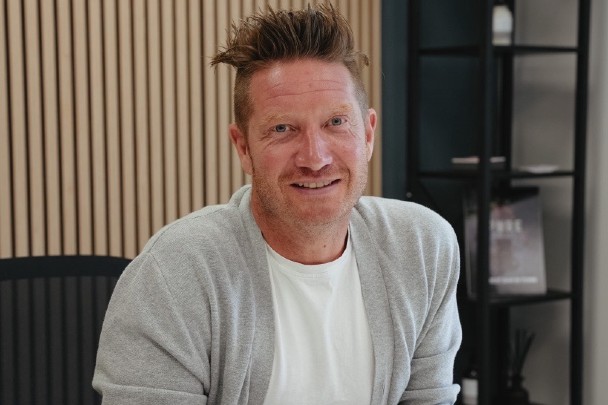November 18, 2024 Industry news
By providing a physical touchpoint, pop-ups enable businesses to showcase their products and bring their brand story to life. This direct interaction helps foster trust, build relationships and generate immediate customer feedback, all of which are crucial for refining product offerings and understanding consumer needs. In today’s experience-driven market, the value of face-to-face engagement can’t be overstated.
The flexibility of pop-ups supports cost-effective testing of new markets and locations. Brands can benefit from the high footfall of prime locations without committing to long-term leases, while the limited-time nature of pop-ups creates a sense of exclusivity and urgency that can boost sales and driving traffic.
Pop-ups can be incredibly powerful tool in the arsenal of any small business, which is why we recently hosted a special webinar featuring the following experts:
- Nicole Compen, founder and director of Raye the store - a travelling pop-up concept providing a discovery space for conscious consumers interested in innovative and emerging food, drink, wellness and beauty brands
- Matthew Hopkins, founder of IND!E Pop-Up - a business that focuses on facilitating pop-up retail experiences, especially for small, independent brands
- Jason Brett, founder & creative director, Curated by Dapper & Suave - a platform and event series that focuses on curating and organising unique pop-up events that bring together a diverse mix of brands, particularly in the lifestyle and fashion sectors
Read on for a summary of the key insights they shared.

Pop-ups as discovery experiences
Nicole Compen emphasises the effectiveness of pop-ups in creating discovery experiences that drive exposure and engagement.
Since launching Raye the store over three and a half years ago, her mission has been clear: connect small brands with the right consumers through tangible, face-to-face events, primarily in central London.
This approach stands in contrast to the often impersonal nature of digital marketing, providing a more personal and impactful way to foster brand growth.

Small brands, big retail
Matthew Hopkins echoes the value of pop-ups in transforming how small brands approach large-scale retail.
IND!E Pop-Up manages over 2,000 pop-up shops each year, including collaborations with major retailers like John Lewis.
With the mantra "Small Brands, Big Retail," IND!E Pop-Up has connected thousands of emerging brands to high-traffic opportunities, proving that curated physical spaces are vital for building consumer awareness and loyalty.

Community-centred engagement
Jason Brett, founder and creative director of Curated by Dapper & Suave, brings a community-focused perspective, highlighting the inclusivity and uniqueness of curated events.
By prioritising diversity in offerings and mentoring brands to shine, Dapper & Suave creates a platform for businesses to meaningfully engage with customers.
These events are designed to be immersive, community-driven experiences, creating lasting connections far beyond the typical craft fair.
Beyond visibility: connection and storytelling
The success of these pop-ups isn't just about visibility; it’s about connection and storytelling. Brands are encouraged to craft authentic narratives, ensuring customers leave not just with a product but with a memorable experience that builds long-term loyalty. In an era of digital saturation, where small brands often struggle to stand out online, pop-ups offer a sensory and interactive experience that digital platforms can’t match, enabling customers to engage directly with products and appreciate the brand’s story.
The challenges of pop-up participation
While pop-ups offer many advantages, they come with their own set of challenges. The application and selection process can be rigorous. For instance, IND!E’s vetting ensures brands are retail-ready, maintaining high standards for product quality and brand presentation.
At Raye the store, Nicole’s team curates each event with a keen attention to detail—from ingredient scrutiny to packaging appeal—ensuring each product complements the broader event experience. This thoughtful curation minimises category overlap and promotes a diverse yet cohesive brand mix for attendees.
Engagement, presentation & storytelling
Customer engagement and presentation are crucial for success. Matthew and Jason emphasise the importance of interactive, visually appealing pop-ups. Brands should invest in creative displays that invite deeper exploration and encourage customer interaction. The goal is not just to make a sale but to create an immersive environment where customers feel connected to the brand’s journey.

Operational realities & financial considerations
Pop-ups also bring operational realities that require strategic planning.
For new brands, understanding the financial landscape of physical retail is crucial.
Retailers often expect margins of 50-55 per cent to cover their operating costs, and brands must factor this into their pricing strategy.
Effective cost management, understanding hidden expenses, and packaging optimisation are all vital to preparing for a successful pop-up.
Time, commitment & proactive engagement
The commitment to pop-ups extends beyond the event itself. Founders and brand ambassadors must be present, proactive, and engage with customers rather than passively waiting for sales. The time investment is significant, with participation often required over extended hours and multiple days. However, the rewards—brand exposure, consumer insights, and potential long-term sales—can be transformative.
Preparation & adaptability for newcomers
For newcomers, preparation and adaptability are key. Visiting other pop-ups, understanding audience dynamics, and refining one’s pitch are essential steps. The goal is to craft a compelling brand story that captivates audiences and seamlessly transitions into more permanent retail opportunities. Pop-ups also serve as a platform for learning and growth, providing valuable feedback from real customers that can guide future product development and market strategies.
Leveraging post-pop-up momentum
Finally, leveraging the momentum after the event is crucial. Whether through social media, PR efforts, or follow-up communication, maintaining the energy from the pop-up can solidify connections and drive ongoing brand success. These immersive experiences aren’t just about immediate sales; they’re about creating lasting impressions that build community, loyalty, and growth. As Nicole, Matthew, and Jason demonstrate, pop-ups are far more than temporary retail spaces—they are strategic stages for storytelling, learning, and brand evolution.




